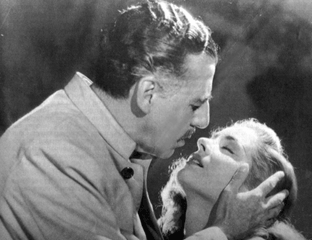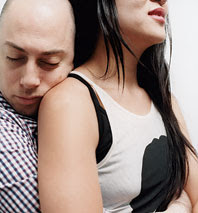Art Vent Letting the Fresh Air In
 The New Museum, 235 Bowery
The New Museum, 235 BoweryWhen, in 1976, John Coplans, then the editor of Artforum, asked me to come to New York and be his assistant, my Chicago artist friends acted as if I’d been invited to Oz by the Wizard himself. It was completely inadvertent. I met John at the CAA convention in Chicago, where I was representing The New Art Examiner, and said, “If you ever hear of a job in New York, let me know.” I’d never thought of moving, and even at that moment it didn’t occur to me as a possibility; the words came out of my mouth, true, but probably because I wanted to see what it felt like to say it, and to give the impression of someone who might actually do such a thing, someone much older and more worldly than me. So two weeks later when John called and offered me the job I was completely unprepared, but with my friends egging me on, I called Angels Ribe, an artist from Barcelona who had lived for a time in Chicago, and asked if she knew of a place where I could live. When she said she was looking for a roommate, it seemed ordained. Except that Angels lived on the Bowery. I vaguely remembered the Bowery from one of my few previous trips to New York and asked Barry Holden, who had just come back from visiting Angels, “Aren’t there like bums and stuff there?” “Oh no,” Barry said, “the Bowery’s been gentrified. There are galleries and boutiques all up and down.”
Needless to say it was a bit of a shock when I got out of the taxi from the airport and there were no galleries and boutiques to be seen, and for several months after I assumed they were on a part of the Bowery I hadn’t been to yet. But I adjusted the way humans can--even girls from the suburbs--to armies of cockroaches and stepping over drunken bodies in the foyer. Do I miss it? What? Do I miss the stench, the filth, the crime, and the pathetic display of humanity I saw every day? No. Would I want my kids to live that way? Hardly. However there was something exhilarating about living on that gritty frontier of Manhattan: we felt courageous, like pioneers, we were in it together, and it was home. That last fact was cinched for me only a few days after I moved, when I was walking down Bowery carrying my portfolio and passed two bums, one of whom nudged the other and said, “She’s an artist.” Hardly anyone in Chicago, employed or otherwise, knew what that was.
_________
Photo is by Christopher Dawson, from the New Museum website
2007 was the year when certain key issues that had previously been on the fringes entered mass consciousness: when it became generally agreed that Bush & Co. are whack and the war in Iraq is a disaster, that universal health care is a necessity rather than a subversive idea, that the pharmaceutical companies don’t have our best interests at heart, and finally, and maybe too late, that what’s happening in the environment is something to be taken seriously. Mass market phenoms such as The Secret and The Da Vinci Code indicate a new hunger for spiritual meaning and a general mistrust of the status quo. 2007 marked the year the Internet became embedded in every area of modern life: corporate publishing now has to compete with blogs, and Radiohead’s much promulgated decision to release their new album on the Internet was no small event. With the demise of the music industry, music is better than ever—because the Internet has taken information and art out of the gatekeeper’s hands and now the audience is calling the shots.
Except in the world of visual art, which seems to have gone backwards, and where everything looks like a retread. 2007 marked the complete takeover of the money people, the year that auctions and art fairs prevailed over gallery exhibitions, the year after which you really can’t get in the door without an MFA. The gatekeepers are everywhere and more powerful than ever. There has to be something new out there, roiling beneath the surface, but what is it? And would we recognize it if we saw it?

Doing research for a catalog essay, I came across this interesting bit of art history from the days when you didn’t need thousands of dollars for an MFA to join the ranks of the art world:
I also learned that Flavin, who previously studied for the priesthood, began making sketches for sculptures incorporating lights during another stint as a guard at the American Museum of Natural History, and that Jackson Pollock once manned the turnstile at the Museum of Non-Objective Painting, which later became the Guggenheim.
Forget grad school, this guard thing sounds pretty hot--maybe all that's necessary to come up with ideas for great art is to be exposed to a bunch of it while having a lot of time on your hands.

We’re the safest society that has ever lived, but the Culture of Fear invades even our homes, with reminders of impending doom everywhere—on each and every window screen in my house, is an unremovable (believe me, I’ve tried) label that says, in English and Spanish: WARNING: SCREEN WILL NOT KEEP CHILD FROM FALLING OUT WINDOW. Do I really want to think about the untimely demise of small beings every time I go to look outside? My hair dryer comes with a tag marked DO NOT REMOVE! that not only says WARN CHILDREN OF THE RISK OF DEATH BY ELECTRIC SHOCK! but adds that I must refrain—duh!—from using it while bathing.
Meanwhile, where are the warnings we really need, such as NOT HAVING HEALTH INSURANCE MAY BE HARMFUL TO YOUR HEALTH or DANGER: EXCESSIVELY LONG POLITICAL CAMPAIGNS MAY CAUSE ENNUI or the one that should be posted above every voting booth: FAILURE TO THINK WHILE VOTING MAY RESULT IN ELECTION OF STUPID OFFICIALS.
I’d end this post by exhorting you to do something risky—RUN! Don’t walk!—but since I’d be courting lawsuits if I did, I’ll simply sign off with: peace, so long, take it easy, have fun, cheers, see you later, Godspeed, sayonara, toodle-loo…and wherever you’re going, I hope you have a rollicking trip and a totally awesome day.
 "Susana" AKA "The Devil and the Flesh"
"Susana" AKA "The Devil and the Flesh"It made me realize that the times we live in are not so bad after all, that we’ve made a lot progress, and have much to be grateful for. I think about how, when my ex-husband entered Evanston Township High School in suburban Chicago at the end of the fifties, there were separate swimming pools for black and white students. How, when I married at nineteen and moved to New Haven in the sixties, selling any form of birth control—condoms, prescription diaphragms and pills, whatever—was illegal in the state of Connecticut. How, in the seventies, a vice president of the company that published Art in America used to think it was fun to stop me at the elevators, feel my back to see if I was wearing a bra, and snap it if I was—and I had to be polite to him or risk losing my job.
I think about how the words “meditation,” “yoga,” “acupuncture,” and even “massage” (except in conjunction with “parlor”) were not part of the vernacular.
I think about how I spent Christmas, 2007, at the home of openly gay men, one of whom has health insurance as a result of his partner’s employee benefits. How thrilled my friend, Laurie, a single mom, is with her adopted Mexican son, and even if he’d come to her the Warren Beatty way, everyone would be happy for her because she's happy. How I can go to a club or restaurant now—even in France, as of today, January 1st—without being overcome by cigarette smoke. I can’t even remember life before the Internet, but I do remember what a drag it was to have to take film to be developed; what am I supposed to do with those boxes of old negatives, anyway? And slides…oh my god…as artists we have been relieved of a terrible burden.
Of course there’s more to do. But now we know it, whereas back in the fifties and early sixties, no one had a clue—and any discomfort, at least in my parents’ social set, could be drowned in WASP alcoholism, socially sanctioned as long as the highballs didn’t start before 5:00.
So in this worst and best of times, let’s make a list of our blessings, and welcome 2008 with optimism, an open heart, and a willingness to make life even better…
Happy New Year!

Anyway, I wrote up the proposal, got on the subway, and dropped it off at 5:00 at the office of a legendary literary agent. She called at 9:00 the next morning (I was still asleep and, at first, thought it was my aunt calling) to say she was interested in representing the project on the condition that I’d be willing to change it to interviews with celebrities. I was not. That wasn’t my idea at all. Who cares how celebrities meet? My interest was in real people—I saw myself as a collector of oral histories, the Studs Terkel of modern romance, spreading hope among the lovelorn.
Less than two years later I was walking by a bookstore in the Village and there it was in the window, How They Met, interviews with celebrities such as Walter Matthau, Robertson Davies, Jay Leno, Daniel Dinkins, and Carly Simon, published just in time for Valentine’s Day. I just checked, and you can buy it on Abebooks.com for $1.00. Not exactly a bestseller. (However I remember once reading, perhaps in Rolling Stone, that when Carly Simon and James Taylor first met at a party they went immediately into the bathroom to fuck—if it’s in the book, that story alone might make it worthwhile. But do we really care how Mrs. Matthau met Mr. Matthau?)
I can’t do the book now because it’s such a good idea that, completely independently, the New York Times took it up and the “Vows” column on the wedding page, is one of their most popular. However if anyone wants to comment and tell me how they met, I’m all ears.